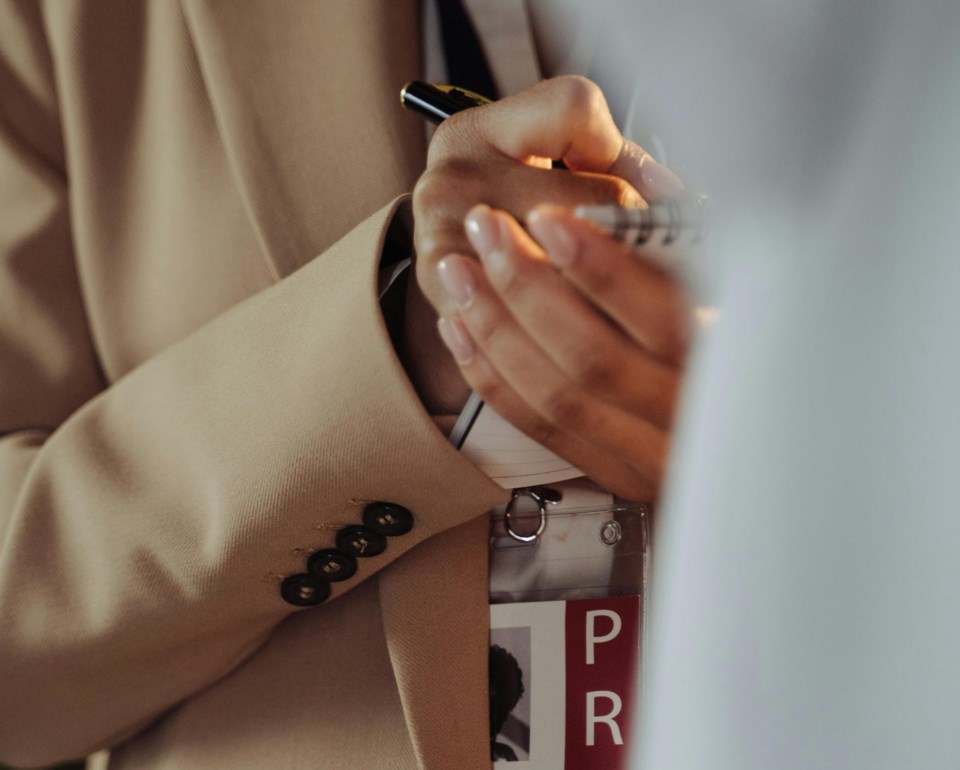This ought to be a great time for journalists, particularly political journalists.
We have just finished a provincial election, an American one is within days, and a federal one looms any month. Beyond politicians, other leaders and fascinating newsmakers abound and continue to turn to journalists as conduits to the public.
But never has journalism been more on the defensive, never has trust in them been so low, and never have misconceptions about the craft so contributed to a disconnection between newsmaker and newsbearer. The B.C. election was frustrating for reporters on both major campaigns.
For the consumption of the politician seeking office, the entrepreneur seeking riches, the athlete seeking admiration or the artist seeking acclaim, I’d like to present a few tips from the standpoint of the reporter, derived from our codes of ethics and guidelines. (Yes, we have them.)
1. A responsible reporter is here as the public’s surrogate, neither a person with an axe to grind nor an extension of your publicity arm, and is expected to pose questions the public would want answered. These questions may not be the questions you wanted, but if you seek publicity, you have to accept the publicity others will provide you. It’s too bad for you if the questions are about something else. At times these questions are offside or inappropriate, but in my experience much more often than not the difficulties in handling them have to do with the newsmaker’s ill-preparedness or evasiveness than with the underlying attitude of the journalist.
2. You may believe you’re in charge of the encounter, but you’re not. The line of questioning is the choice of the journalist, not yours, and your refusal to answer questions is perceived (usually correctly) as dodginess that you can expect to be reported. Admittedly, this is often where both parties – the reluctant subject and the persistent interrogator – lose points with audiences on either side of an issue.
3. If you choose to provide an interview or present a news conference, don’t simply rehearse the messages you want to transmit. Anticipate your vulnerabilities and have answers for the most uncomfortable of them.
4. It’s fine when you’re asked a question to say you don’t know the answer, that you’ll try to find it if the reporter would like you to, and get back by the deadline. It’s fine to say you choose not to comment if asked, but explain why. It’s not fine to not respond.
5. The ground rules for any interview need to be set out beforehand. Are you willing to be quoted, or is this interview simply to provide anonymized background information to the journalist? You can agree to establish what, if any, are the boundaries you and the journalist need to respect. It may shock you, but even in agreeing to ground rules it is possible (although highly unlikely) that the journalist will use the information and attribute it to you. It would be unethical and likely end the relationship. But it is fair to warn you it could happen. It’s best to first build trust with the journalist; if you’re in a rush with vital information you believe the public needs to know, go to an organization you value.
6. Your quotes are your quotes. You don’t get a do-over to fix them afterward, and journalists have no obligation to check your quotes with you before publishing.
7. Some of my colleagues might disagree, but I’ve found it is good practice to check any factual matter before publishing. Issues are complex and journalists are not typically expert.
8. Sending a full story to you for approval? Don’t be ridiculous. There are advertising departments we can connect you to.
9. Everyone makes mistakes; that’s why there are erasers on pencils. One in two news stories contains a factual error. Over more than a century of studies, despite better educated journalists with more tools to research and verify, that statistic hasn’t changed. Today’s journalist bears an increasingly heavy workload in reduced newsrooms and more sources of information to sift through than ever. Your best role as a newsmaker is to help mitigate mistakes by being clear about your facts and opinions, to understand when errors occur, and to complain when one might alter the meaning or accuracy of a story.
10. Each journalist is different, there is no “the media” any more than there are “the politicians” or “the businesspeople,” so generalizing or speculating about them is a mistake. But it isn’t a mistake to make the journalist and the organization accountable for a mistake of any consequence. If they fail to do so, let others know.
I could go on, but I hope these points help dispel some myths and set some records straight. At least I’ve tried.
Kirk LaPointe is a Glacier Media columnist with an extensive background in journalism. He teaches ethics and leadership at University of British Columbia’s School of Journalism, Writing and Media.



